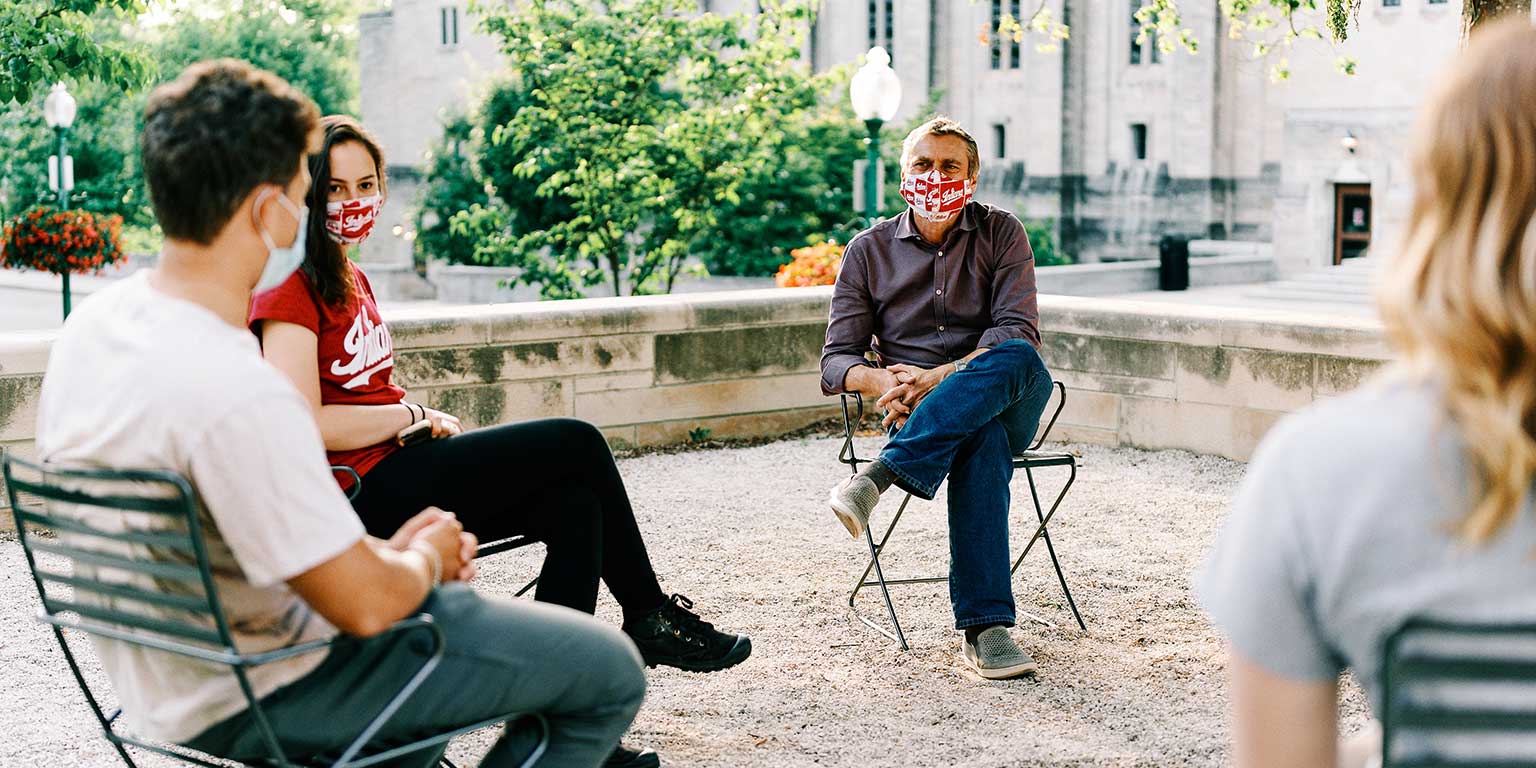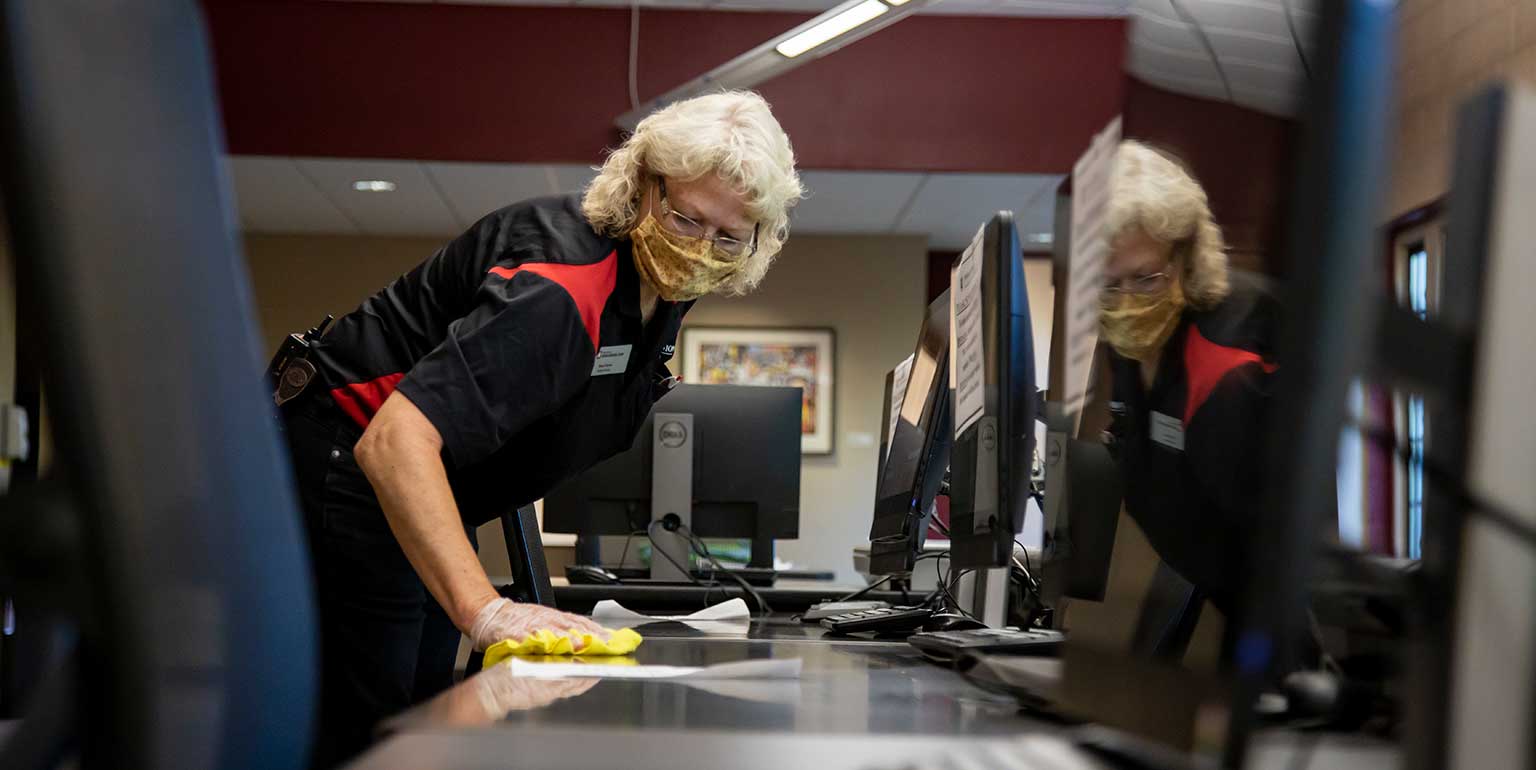By Raymond Fleischmann | Summer 2020
After so many months of quarantine, March 2020 feels less like the recent past and more like a different lifetime. Across the world, coronavirus has had a dramatic effect on the way we work, live, and learn. And as higher education undergoes a moment of unprecedented transformation, the College of Arts and Sciences is no exception.
I recently spoke with the College’s executive dean, Rick Van Kooten, about a few of the changes the College has made in response to COVID-19, including the need for expanded online learning. We also talked about his professional life before he assumed the role of executive dean on July 1, 2019.
In addition to previously serving Indiana University Bloomington as vice provost for research, Van Kooten has served as a professor of physics since 1993. An award-winning teacher, he has taught a wide variety of undergraduate and graduate courses and is the author or co-author of more than 750 publications, mostly in the area of particle physics.
Fleischmann: The past six months has been a time of unanticipated tragedy, turmoil, and uncertainty. Tell our readers about the College’s response to COVID-19, especially the adjustments made this past spring semester.
Van Kooten: Last March, we were fortunate to have swiftly decided to transition to online courses rather than requiring students to return after spring break, which had already been extended by one week to give our faculty and staff enough time to prepare for the shift online. In-person courses would undoubtably have led to more cases of COVID-19 on campus and within the Bloomington community. Our faculty, staff, and students needed to rise to the occasion, and I was so impressed with how they did that, working together as everything changed. I like to think we all learned a lot about how to learn, even under unexpected duress.





